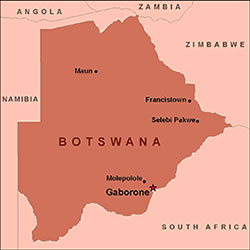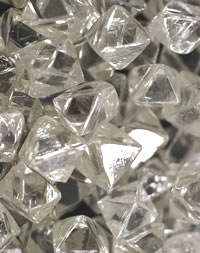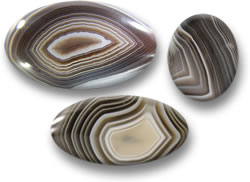Gemstones from Botswana

Introduction to Botswana
Botswana is a dry country, mostly covered by the Kalahari Desert. Yet, beneath its arid surface lie significant deposits of diamonds, the world's hardest gemstone, and other precious minerals. This, combined with its longstanding multi-party democracy, makes Botswana one of the most stable nations in Africa, unlike some diamond-producing countries such as Sierra Leone with its conflict-ridden diamond history. Formerly a British colony known as the Bechuanaland Protectorate, it gained independence as the Republic of Botswana in 1966. Starting as one of the poorest African nations, the discovery of diamonds just a year later transformed its economy, turning it into a leading diamond producer.
Diamond Discovery and Economic Rise
The shift from poverty to prosperity happened quickly after diamonds were found in 1967. Botswana's story is a classic example of how natural resources can change a nation's fate - think of it as hitting the geological jackpot. This discovery propelled the country to become a key player in the global diamond market.
Notable Diamonds and Major Mines
Botswana has produced some extraordinarily large diamonds. For instance, a 239-carat rough diamond was unearthed in 2013, followed by a 341.9-carat piece in April 2015 that sold for $20.6 million. But those were outshone in November 2015 when 813-carat and 374-carat stones were found in the same week, along with the massive 1,109-carat Lesedi la Rona rough diamond - the second-largest gem-quality diamond ever discovered. The world's largest rough diamond remains the Cullinan, found in South Africa in 1905 at 3,106 carats. It was cut into several gems, with the biggest, the 530-carat Cullinan I or Great Star of Africa, set in the British Crown Jewels.
Not just about size, Botswana hosts the world's largest diamond mine by area in Orapa, Central Botswana. This mine, the country's oldest, averages 10 million carats annually. The Jwaneng mine, a short drive from the capital, was developed after a 1973 discovery, just two years post-Orapa.

Diamond Processing and Trade
While Botswana has long been a top source of rough diamonds by value, it's only recently become a hub for processing and trading. Cutting, polishing, and selling now happen in the capital, Gaborone, near the South African border. Finished diamond jewelry is also traded there. In 2013, De Beers and the Botswana government launched the Diamond Trading Company (DTC) Botswana, shifting the international diamond trade center from London - where it had been for a century - to Gaborone. This move not only centralized trade but also sparked economic growth through tourism and related services for global gem traders. Next to DTC is the Diamond Technology Park (DTP), conveniently located between the airport and city center. The nation continues to build its international business setup, including transport, communications, and lodging.
Other Gemstones from Botswana
Beyond diamonds, Botswana yields about 30,000 kilograms of "semi-precious" gems yearly, including aquamarine, amethyst, azurite, carnelian, and agate. Agate mining has a long history here, and since the 1970s, only processed agate can be exported. Botswana agate stands out for its striking banding and colors like pink, making it highly valued. It's often crafted into ornate pieces.

Challenges and Future Prospects
Diamond output at past levels isn't sustainable forever, and production dipped recently. However, new kimberlite finds suggest more diamonds ahead. The processing and trade hub will support the economy long-term. Botswana is also expanding mining for uranium, copper, gold, palladium, nickel, platinum, and cobalt.
Despite hurdles like poverty, declining diamond yields, low agricultural production, and water scarcity, Botswana is proactive. Investing in infrastructure, sustainable energy, diamond processing, tourism, and product diversification will keep its future solid. It's impressive how far they've come in just over 50 years, right?
Frequently Asked Questions
What makes Botswana a top diamond producer?
Botswana's rich diamond deposits, discovered in 1967, combined with stable governance, have made it the world's leading source by value.
What are the major diamond mines in Botswana?
The key mines are Orapa, the oldest and largest by area, producing about 10 million carats yearly, and Jwaneng, developed in the 1970s.
Besides diamonds, what gemstones come from Botswana?
Botswana produces semi-precious gems like aquamarine, amethyst, azurite, carnelian, and notably banded agate.
How is Botswana preparing for the future beyond diamonds?
The country is diversifying into other minerals, boosting diamond processing and trade, infrastructure, tourism, and sustainable energy.
What is the largest diamond found in Botswana?
A 1,109-carat rough diamond was discovered in 2015, the second-largest gem-quality diamond ever found.

